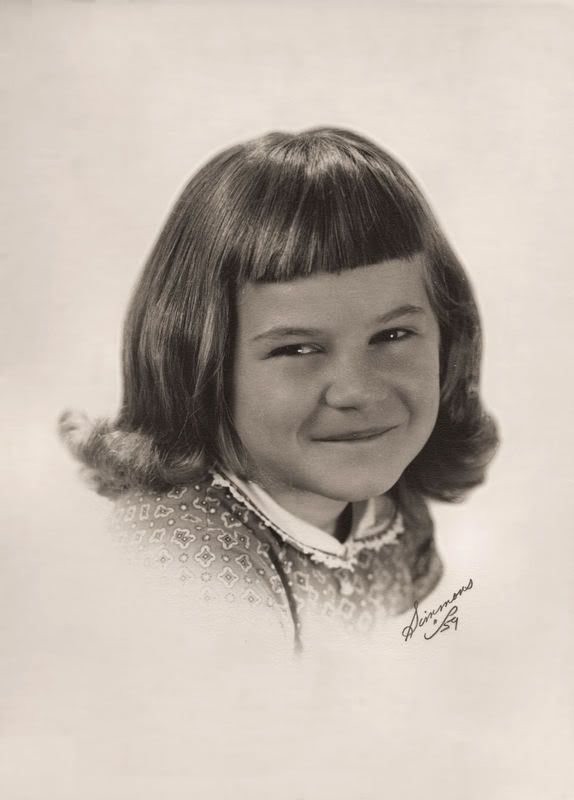Monday, June 18, 2007
Busy!
If there are any topics you would like to see covered, please leave a comment!
See you soon!
Tuesday, May 29, 2007
Werewolf Syndrome aka Congenital Generalized Hypertrichosis
In earlier eras, people afflicted with CGH would stay indoors during the day, going out only at night, to avoid being ostracized. Because of this behavior, people began to associate these unfortunate folks with werewolves, thus the vulgar name of Werewolf Syndrome. CGH is characterized, in its severest form, by thick hair covering the entire body, sparing the palms of the hands, and soles of the feet! Researchers believe the cause to be a genetic mutation, or an “awakening” of a very old, dormant gene-harkening back in evolution to hairier times!
CGH is extremely rare, with only about 50 documented cases since the Middle Ages. One of the first documented cases was found in French King Henry II’s court! King Henry was highly interested in human oddities and quirks of nature, and in 1547 was given, as a gift, a 10 year old boy who appeared to be half human, half animal. Four inch, thick blond fur covered his entire body, except for lips and eyes. The boy’s name was Pedro Gonzales, born in the
Researchers are familiar with other atavistic genetic behavior. Some rare examples include additional nipples, and small tail-like extrusions at the end of the spine. The defective gene in CGH is passed by both sexes, to 50% of their offspring. Typically, fetuses lose their fine body hair, called lanugo, by the end of the seventh and eight month of gestation. Babies afflicted with CGH are born with this body hair intact, which occasionally fades in adulthood, but typically lastis a lifetime.
Currently, the best known cases of CGH occurs in a family living in
“"This is probably a mutation of a gene that was a sleeping beauty," said Dr. Jose M. Cantu, head of genetics at the Mexican Institute for Social Security in
But Dr. Cantu and his colleagues emphasized that the idea of generalized hypertrichosis as an atavistic mutation was only a theory. "At this point it's strictly speculation, though the idea is a very interesting one," said Dr. Pragna I. Patel of the
Biologists have observed many other mutations that they suggest fall into this class of atavisms, the reappearance of normally dormant traits. Some people are born with multiple sets of nipples, for example, just as most nonprimate mammals have a double ridge of mammary tissue down the length of the underside of the torso. In very rare cases, girls develop entire extra breasts at puberty.
Other examples of atavistic mutations include the extension of the human coccyx into a small tail, the appearance of hind limbs in whales and the growth of extra toes on horses and cats.
"Atavistic mutations tell us that a lot of information is kept around for a very long time," said Dr. Brian K. Hall, a developmental biologist at
Read an interview with Chuy, a Mexican man with hypertrichosis.
http://www.listentome.net/stuff97.php
Five TV’s article on Chuy:
http://www.five.tv/programmes/hiddenlives/wolfboy/
Friday, May 18, 2007
Google Answers
 Here are more favorite Google Answers:
Here are more favorite Google Answers:Plantar fasciitis - do clogs or Birkenstocks help?
https://answers.google.com/answers/threadview?id=548720
Mixing bowls-glass or plastic?
https://answers.google.com/answers/threadview?id=542785
Whole body numbness
https://answers.google.com/answers/threadview?id=542273
Strong Bones
https://answers.google.com/answers/threadview?id=593399
Need change on death certificate
https://answers.google.com/answers/threadview?id=559238
Monday, May 14, 2007
Ipods and Pacemaker Malfunction?

The results of an Ipod's effects on cardiac pacemakers was presented recently at the Heart Rhythm Society, in Denver, Colorado. (Reported by the Denver Post). The senior author of the study was Dr. Jongnarangsin.
A study at the Thoracic and Cardiovascular Institute at Michigan State University found that an Ipod can cause pacemakers to malfunction by causing electro-magnetic interference.
What's interesting about this study is that it was prompted by a Jay Thaker, a high school student from Okemos, Michigan. Since Jay's mom is a rheumatologist, and his dad is an electrophysiologist, his interest in physiology is not not surprising. Jay had been pondering the idea of whether an Ipod could cause interference with pacemakers. When he and his dad searched online, they found no information. (Too bad Google Answers is among the dearly departed!)
When asked by one of his patients if there would be a problem using an Ipod with his pacemaker, Jay's father suggested he contact Dr. Krit Jongnarangsin, an assistant professor in the Division of Cardiovascular Medicine at the University of Michigan.
Dr. Jongnarangsin said that most patients with pacemakers are not Ipod users, but they could have children or grandchildren who do.
Read more :
Reuters
http://www.pcworld.com/article/id,131736/article.html&tk=nl_wbxnws#
MSNBC
http://www.msnbc.msn.com/id/18598054/
Monday, May 07, 2007
Cubital Tunnel

Everyone has heard about carpal tunnel these days, but few have heard about cubital tunnel! Cubital tunnel, like carpal tunnel syndrome, is a compressive neuropathy, meaning nerve pain from a stretched or compressed nerve.
Cubital tunnel is caused by pressure on the ulnar nerve, a primary nerve, supplying the hand. CT can cause numbness and tingling of the pinkie and ring fingers. Pain on the side of the arm closest to the chest can also occur in cubital tunnel.
The ulnar nerve reaches from the spinal cord to the hand and forearm and hand, including the skin on the on the outer portion of the hand. (The pinkie side). The ulnar nerve passes over a bony portion of the elbow (medial epicondyle) and when stretched, can cause tingling, even an electrical shock feeling, in the ring finger and pinkie!
How is cubital tunnel treated? The first step is to try and avoid bending the elbow for long periods of time. Don't lean on your elbows! Constant phone use can aggravate CT as the arm is bent while holding a phone-land line or cell! Surgery is the treatment of last resort... taking ibuprofen can help, and some claim that vitamin B6 (never more than 100mg per day) helps alleviate pain and tingling.
 Another home remedy is to roll the elbow in a towel, like a pig in a blanket. Wrap the towel with surgical tape or pin with safety pins. This will keep the elbow extended, not bent. Since many people are afflicted by CT due to bending their elbows while sleeping, this will prevent them from folding their arms, and alleviating pressure on the ulnar nerve.
Another home remedy is to roll the elbow in a towel, like a pig in a blanket. Wrap the towel with surgical tape or pin with safety pins. This will keep the elbow extended, not bent. Since many people are afflicted by CT due to bending their elbows while sleeping, this will prevent them from folding their arms, and alleviating pressure on the ulnar nerve.For more in-depth information about cubital tunnel, visit these links:
e-Medicine
http://www.emedicine.com/orthoped/topic479.htm
Hand University
http://www.handuniversity.com/topics.asp?Topic_ID=8
Monday, April 30, 2007
Canavan Disease
A rare genetic, degenerative disease, turning the brain into a spongy mush, describes Canavan disease. CD is named after Myrtelle Canavan, the researcher who in 1931 first described the condition. It afflicts infants, and death is common before the age of 4. Those that live a few years longer are prone to seizures and may suffer from blindness and paralysis. CD is most common among Ashkenazi Jews from eastern Poland, western Russia, Lithuania, and Saudi Arabians.
Symptoms such as hypotonia(abnormal muscle tone), macrocephaly (very large head), and head lag in an infant after the age of three to five months should raise a red flag to parents.
There is no real treatment, other than keeping the child well fed, hydrated, comfortable and maintaining an open airway.
You can learn more about Canavan Disease here:
Canavan Foundation
http://www.canavanfoundation.org/canavan.php
Information on other Jewish genetic diseases
http://www.canavanfoundation.org/ninediseases.php
Thursday, April 26, 2007
Carbonite
Do you recognize the Blue Screen of Death? If not, you will!
Today we're digressing from the usual topics to preview a product that many of us need, but didn't know about!

You've probably spent a lot of time organizing and collecting data on your PC or laptop. Do you do use your PC for bookkeeping? Are you writing the great American novel? Do you store family photos on your laptop? What if they were gone in a flash? If you're like me, you have a plethora of irreplaceable photos and tax and banking business stored on your hard drive. If your hard drive fails, where will you be?
Sure, I've burned things to CDs, but I'm not the best organizer. It would be hard to locate and re-organize all my work and downloads!
Recently I read about Carbonite Online back-up service, on the ScrapGirls site. I decided if a business with a huge amount of data to store trusted this service, I would learn more! I read about it, and decided to try it. I love it! I was at the point of buying another external hard drive, but the size I would need would cost over $500. Carbonite costs $5 per month, with no size limits. If you pre-pay for $49 for a year, it comes to $4.16 a month! I could not buy an external drive with enough life span to beat Carbonite's price!
Once you back up your hard drive, Carbonite does incremental back ups, meaning it will automatically back up the newest additions to your hard drive, and not start from the beginning! Stored files will have a small dot by them, so you KNOW they are backed up.
Restoring files is a snap! Your data is encrypted before it leaves your computer, so it is secure, and Carbonite also has redundant security, so you will never lose data!
You can Carbonite free for 15 days. The upload for the trial version is very slow, but worth it. You can still use your PC while backing up though! I highly recommend it! Click the Carbonite logo below to read more! You will be happy you did!


